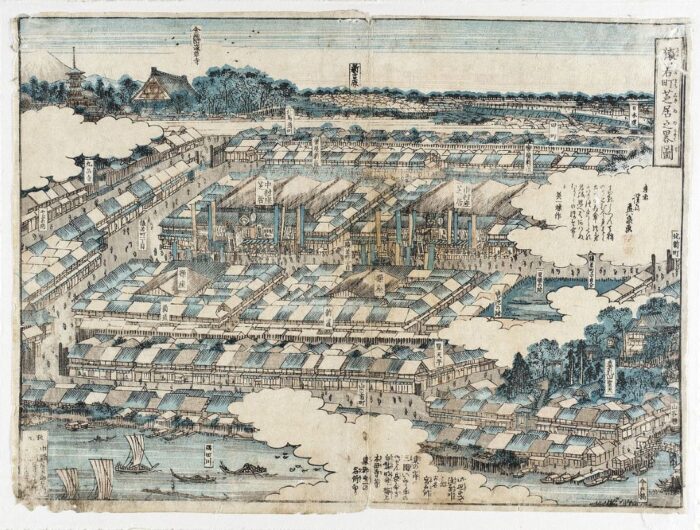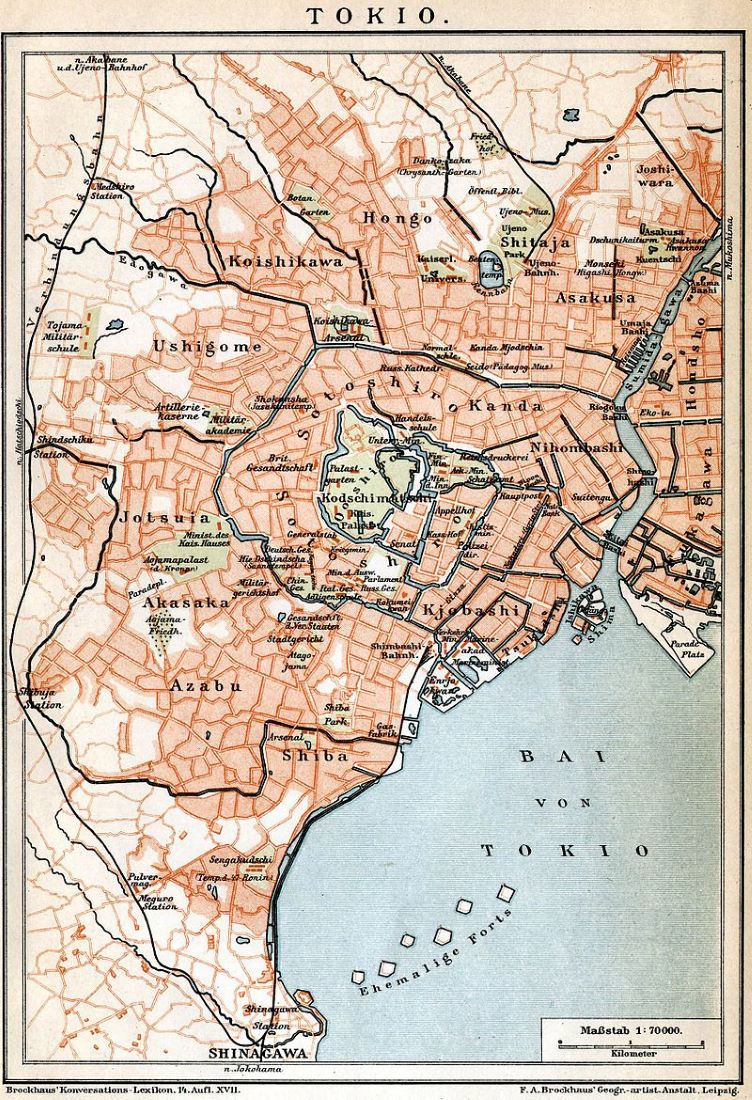Tokyo, the bustling capital of Japan, has a rich history that dates back centuries. One of the most fascinating periods in Tokyo’s history is the Edo period, which lasted from 1603 to 1868. During this time, Tokyo (then known as Edo) was the center of political and cultural life in Japan.
During the Edo period, Tokyo was a city of contrasts. On one hand, it was a city of great wealth and luxury, with lavish palaces, beautiful gardens, and elaborate festivals. On the other hand, it was a city of poverty and hardship, with crowded slums and frequent fires. Despite these challenges, Tokyo thrived during the Edo period, and many of the city’s most iconic landmarks and cultural traditions were established during this time.
Today, visitors to Tokyo can still see many remnants of the Edo period, from the historic temples and shrines to the traditional crafts and cuisine. Whether you’re a history buff, a foodie, or just looking to experience the unique culture of Japan, Tokyo during the Edo period is a fascinating topic that is sure to captivate and inspire.
Edo Period Overview

The Edo period, also known as the Tokugawa period, lasted from 1603 to 1868 and was a time of relative peace and stability in Japan. During this period, the capital of Japan was moved from Kyoto to Edo, which is now known as Tokyo. The Edo period is known for its strict social hierarchy, flourishing arts and culture, and economic growth.
Political and Social Structure
The political and social structure of the Edo period was characterized by the strict social hierarchy known as the “Four Divisions of Society”. At the top of the hierarchy were the samurai, followed by peasants, artisans, and merchants. The samurai were the ruling class and were responsible for maintaining law and order. The emperor was a figurehead during this time, and the shogun, who was a military leader, held the real power.
Economy and Trade
The Edo period was a time of significant economic growth and development. The government implemented policies that encouraged trade and commerce, leading to the growth of towns and cities. The merchant class, which had previously been looked down upon, became more influential and wealthy during this time. The development of a national currency and the establishment of a market economy also contributed to economic growth.
Trade with foreign countries was limited during this time, with only a few Dutch and Chinese traders allowed to conduct business with Japan. However, the growth of domestic trade and commerce was enough to sustain economic growth.
Tokyo’s Growth and Development

Geography and Topography
During the Edo period, Tokyo was known as Edo and was a small fishing village. It was located in the eastern part of Japan, on the island of Honshu. Edo was built on a flat plain, surrounded by hills and mountains. The city was situated on the banks of the Sumida River, which flows into Tokyo Bay.
The topography of Edo played a significant role in its development. The city was built on a floodplain, and the surrounding hills and mountains provided protection from the wind and other natural elements. The flat terrain made it easy to construct buildings and roads, which helped the city grow rapidly.
Infrastructure and Architecture
Edo was a bustling city during the Edo period, and its infrastructure played centered around Edo Castle played a significant role in its growth and development. The city had a well-developed transportation system, with roads, bridges, and canals connecting different parts of the city. The canals were used for transportation and also served as a source of water for the city.
The architecture of Edo was also noteworthy. The city was known for its wooden buildings, which were designed to withstand earthquakes. The buildings were constructed using a unique method called “kanzukuri,” which involved interlocking wooden joints without the use of nails. This technique made the buildings more flexible and better able to withstand earthquakes.
Overall, Tokyo’s growth and development during the Edo period was significant. The city’s geography and topography, as well as its infrastructure and architecture, played a critical role in its success. Today, Tokyo is a bustling metropolis, and its Edo period roots can still be seen in its architecture and culture.
Culture and Lifestyle

Arts and Entertainment
Edo Period Tokyo was a hub of cultural activity, with a thriving arts and entertainment scene. Kabuki theater was particularly popular, and it was not uncommon for people of all social classes to attend performances. The city was also home to many ukiyo-e artists, who created woodblock prints depicting scenes of everyday life, landscapes, and famous actors.
Other popular forms of entertainment included sumo wrestling, which was considered a serious sport and attracted large crowds, and hanami (flower viewing) parties, where people would gather to appreciate the cherry blossoms in the spring.
Fashion
The Edo Period saw the emergence of a distinct fashion culture in Tokyo. The city’s residents were known for their love of elaborate, colorful clothing, and a wide variety of fabrics and styles were available. Kimono were the most common form of dress, and both men and women often wore multiple layers of clothing to create a fashionable look.
Hairstyles were also an important part of fashion, and both men and women spent a great deal of time and money on their hair. Women in particular were known for their elaborate hairstyles, which often involved intricate braids and hair ornaments.
Food
Food was an important part of daily life in Edo Period Tokyo, and the city was known for its vibrant culinary scene. Street vendors sold a wide variety of snacks and sweets, including dango (sweet rice dumplings), taiyaki (fish-shaped cakes filled with sweet bean paste), and amezaiku (intricately shaped candy).
Restaurants were also popular, and many specialized in regional cuisine from around Japan. Edo-style sushi, which features bite-sized pieces of raw fish on top of small portions of rice, was particularly popular and is still enjoyed today.
The Sum Up

During the Edo period, Tokyo was a city of contrasts. It was a time of peace and prosperity, but also a time of strict social hierarchy and isolation from the outside world. The city was home to the shogun and his samurai warriors, but also to a thriving merchant class and a vibrant entertainment district.
Despite the strict laws and regulations, Tokyo during the Edo period was a city that embraced art, culture, and innovation. The city was known for its beautiful gardens, intricate woodblock prints, and unique cuisine. It was also a time of great technological advancements, with the development of the first public transportation system, the birth of Kabuki theater, and the creation of the first Japanese encyclopedia.
Today, Tokyo is a bustling metropolis that has retained much of its Edo-era charm. Visitors can still experience the traditional Japanese culture that flourished during this time, from the beautiful temples and shrines to the delicious street food and unique shopping experiences. Whether you’re a history buff, a foodie, or just looking for a unique travel destination, Tokyo during the Edo period is a fascinating time to explore.






